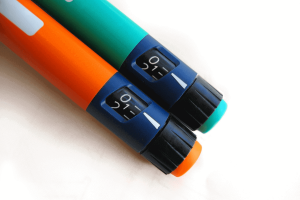Are all calories created equal?
Whether it’s broccoli or potato chips, 100 calories is 100 calories, right? Wrong! Turns out, calories aren’t like people–they’re not all created equal. According to WebMD, the average adult should eat somewhere between 1,500-2,000 calories each day. Here’s how to make the most of them.
First, it’s important to know what a calorie actually looks like. Technically speaking, a calorie is a measure of heat. It’s the unit of energy required raise 1 gram of water by 1 degree Celsius. In the science world, all calories are the same. But when it comes to food, things get a little more flexible.
It’s important to note that most research suggests weight gain comes from consuming too many calories. If you’ve ever been on a diet plan, you’ve probably heard the phrase, Calories in must be less than calories out. This means that in order to lose weight, you should be eating fewer calories than you’re burning. The same is true the opposite way around–those who eat more calories than they burn tend to add a few pounds.
According to new research, weight loss is indeed a result of eating fewer calories. However, what matters more than the actual number of calories a person eats is the type of food that contains them. For example, a person who eats a 100-calorie snack of chocolate chips is more likely to gain weight than a person who eats a 100-calorie snack of almonds. Why? Even though they’re eating the same number of calories, the chocolate chip fan is eating calories full of fat and sugar. His treat is also lacking in belly-filling protein and fiber. As a result, that person may find himself snacking again in a few short hours. On the other hand, the person who ate the almonds had a snack that was filling and nutritious. This means he’s less likely to nibble throughout the day.
Ready to see for yourself just how different calories can be? Here are three tips to help you figure out which calories are better for you than others:
Focus on fiber. According to an article from the National Center for Biotechnology Information, when people eat high-fiber foods, the body only absorbs about three quarters of them. This means that out of the 100 calories you consumed in an apple snack, only 75 percent of them were used by your body. The rest are flushed out. Looking for yummy high-fiber snacks to fuel your afternoon? Try whole grain crackers, fruit, or kale chips.
Pack in protein. Protein can help tame your urge to snack, meaning you’re less likely to sneak in extra calories throughout the day. That’s because protein is a nutrient that helps keep you full. See how good those two extra 100-calorie packs of potato chips sound after a 100-calorie piece of jerky or a handful of dried fruit and nuts.
Stop (or limit) the sugar. Anyone who’s ever munched on a candy bar or chowed down on a cookie will know that sugar is addictive. That’s because when you indulge in a sweet treat, your blood sugar rises and your brain releases chemicals that make you feel good. Unfortunately, that high doesn’t last long. The sugar wears off, and your body is left craving more. As a result, you grab another snack–or two, or three. Gotta satisfy your sweet tooth? Try a piece of fruit, some yogurt, or a small square of dark chocolate.
Photo courtesy of rusvaplauke on Flickr




